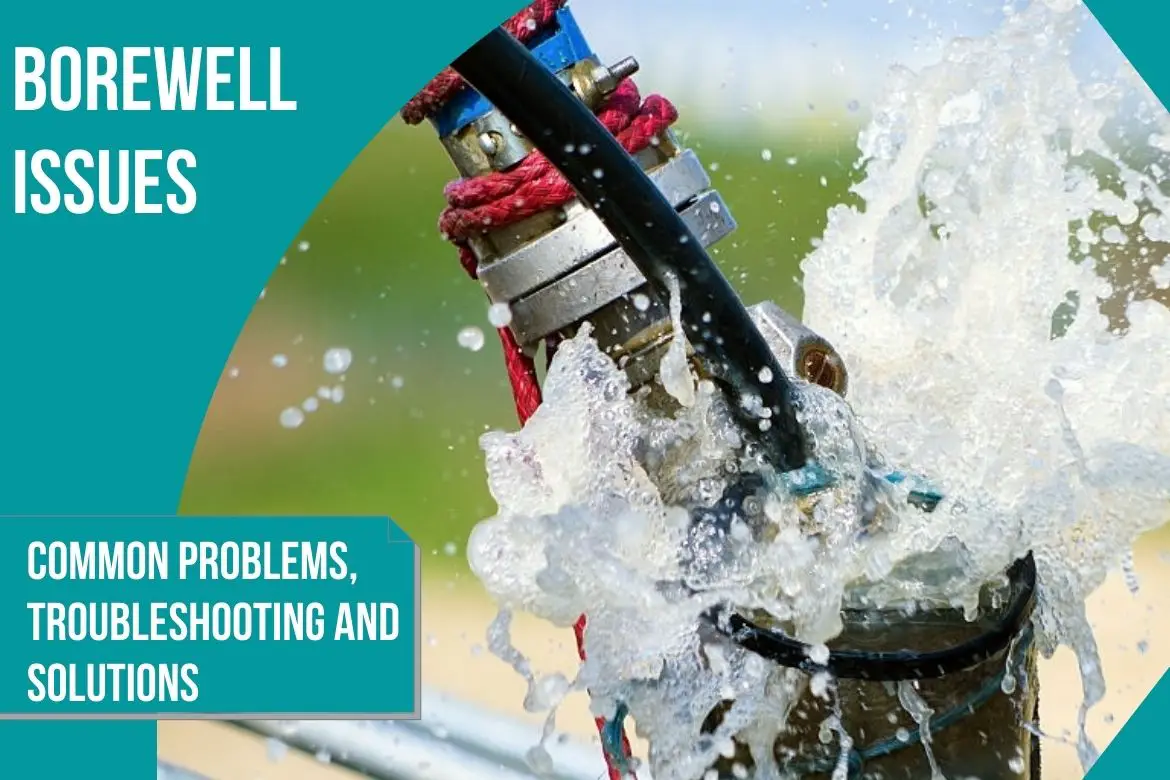Some of the problems encountered with borewells include reduced supply, dirty water, sand pumping, and deteriorating water quality. It is often the case that borewell problems are due to some mechanical defect, but this is not always the case.
You should first identify the cause of the borewell problem before you perform any work on it. Rehabilitation works that don’t target the cause of the problem can waste a great deal of time and money.
Borewell problems can roughly be divided into three categories:
- The condition of the resources
A fall in water level may occur if drought conditions exist or excessive demands are placed on the aquifer system. As a result, bore yields are likely to decrease.
The standing water level is a good indicator of an aquifer’s performance. When it is lower than normal, there is less water to pump, resulting in a decrease in supply.
A reduction in individual bore yields can occur when there are a large number of bores tapping an aquifer or where nearby bores are being pumped.
Standing water level may be normal, but the water supply may have diminished, indicating a problem with the pump or bore. - Borewell’s physical condition
Deteriorating borewells can cause a variety of problems.
The borewell’s water flow can be reduced or stopped in case of:
(A) When the casing or the screens corrode which allows the entering and accumulation of sediments
(B) Deposits of clay build up adjacent to screens or slots
(C) Chemical deposits or bacterial slime can clog screens or slots
(D) A poorly designed screen or slot causes fine material to enter the borewell
Furthermore, corroded casing can allow poorly filtered water from a higher, untapped aquifer into the borewell. - The condition of a borewell’s pumping equipment
When water supply problems occur, the pump should also be checked. You should start by making sure the pump, motor, and delivery system are working.
The impellers of pumps wear down, the inlets become blocked, and the pump casings develop holes. These factors can lead to reduced or no supply of water.
Ensure that the pump capacity of a new borewell does not exceed the yield of the bore.
The table below outlines possible causes, troubleshooting steps, and solutions for overcoming some of the problems encountered with borewells.
One should be able to determine the most likely cause of the borewell problem. However, it is always advisable to seek professional assistance before taking any drastic corrective measures.
| Issue | Causing factors | Troubleshooting Steps | Possible Solution |
|---|---|---|---|
| Complete failure of water supply | A pump malfunctioned | Examine power and check the working of pump | Replace or repair the pump |
| Water entry to borewell blocked | Measure standing water level | Bores should be redeveloped or treated with chemicals | |
| Dewatered borewell | Measure standing water level | Drill or relocate boreholes to deeper aquifers | |
| Collapsed borewell | Measure borewell's bore depth | Replace bore | |
| Collapsed Formation | Measure standing water level | Replacing the bore or cleaning and recasing | |
| Low water Level | Measure standing water level | Pumping rate should be reduced or the bore should be deepened | |
| Restricted entry of water to borewewll | Examine the discharge for deposits and measure the water level | Bores should be redeveloped or treated with chemicals | |
| Reduced water supply | A pump malfunctioned | Examine pump | Replace or repair the pump |
| Silted up borewell | Measure the bore depth | Redevelop and clean up the borehole | |
| Interference of neighbouring borewells | Monitoring the effect of pumping of neighbouring bores on standing water levels | Reduce pumping rate | |
| Iron/manganese bacteria | Look for slimy deposits in the discharge and/or analyze the water | Bores should be disinfected/treated with chemicals | |
| Water that is discolored or smells bad | Particles of clay or silt entering the borewell | Discharges should be checked for deposits | Redevelop the bore |
| Polluted water source, such as leaks from nearby septic tanks | Do water analysis | Replacing the bore, sealing the surface casing, and removing the pollution source | |
| Borewell Pumping sand | Holes in casings or screens | Examine the discharged water and the bore depth | Replace the casing or bore |
| Incorrectly sized screens or slots | Examine the discharged water and the bore depth | Redevelop the bore and replace the screens/slots | |
| Subsidence at the surface | Collapsed water bed | Examine discharged water | Replace the bore |
| Sand pumping through incorrectly sized screens or slots | Examine the discharged water and the bore depth | Redevelop the bore and replace the screen/slots |

